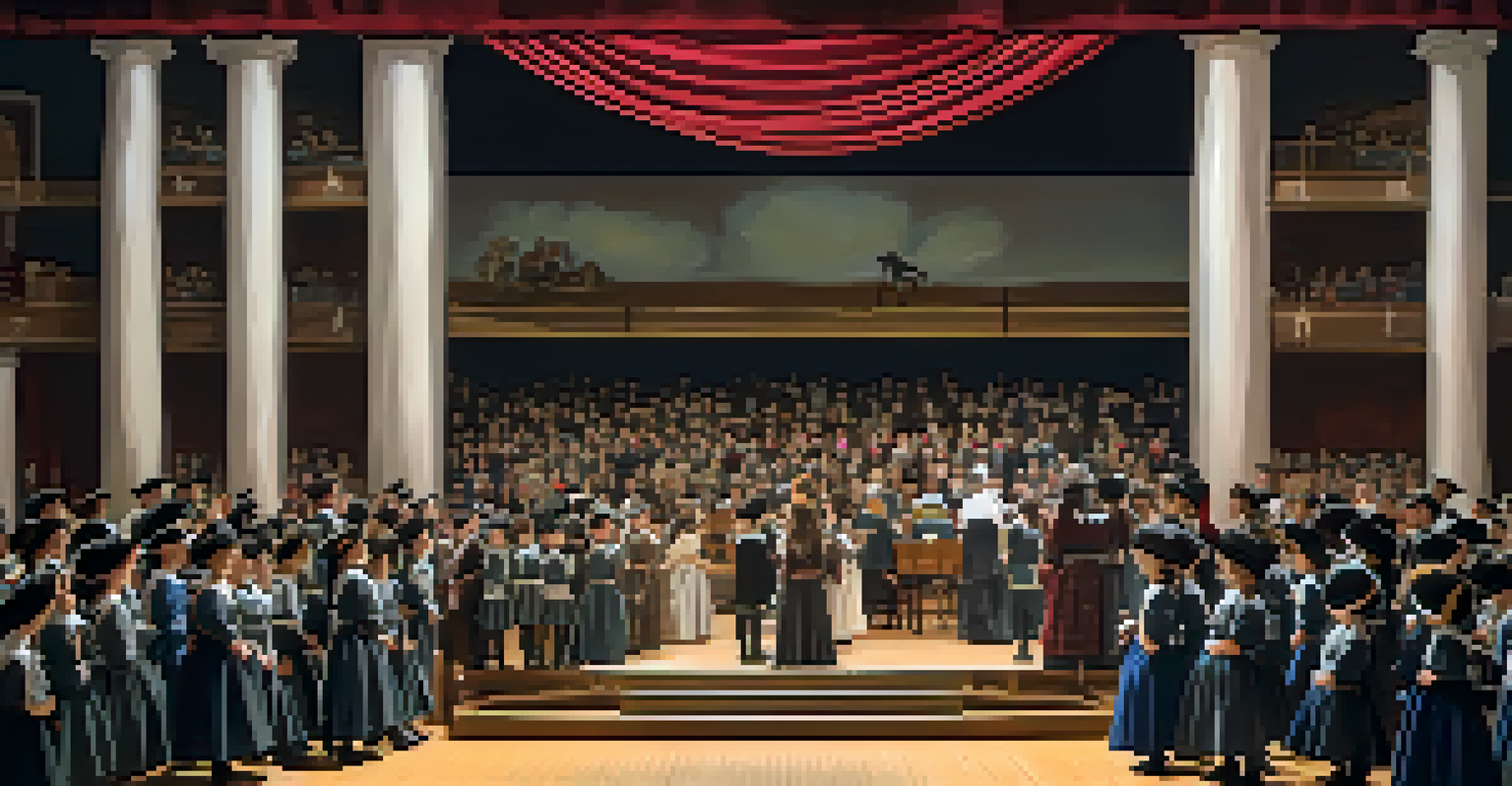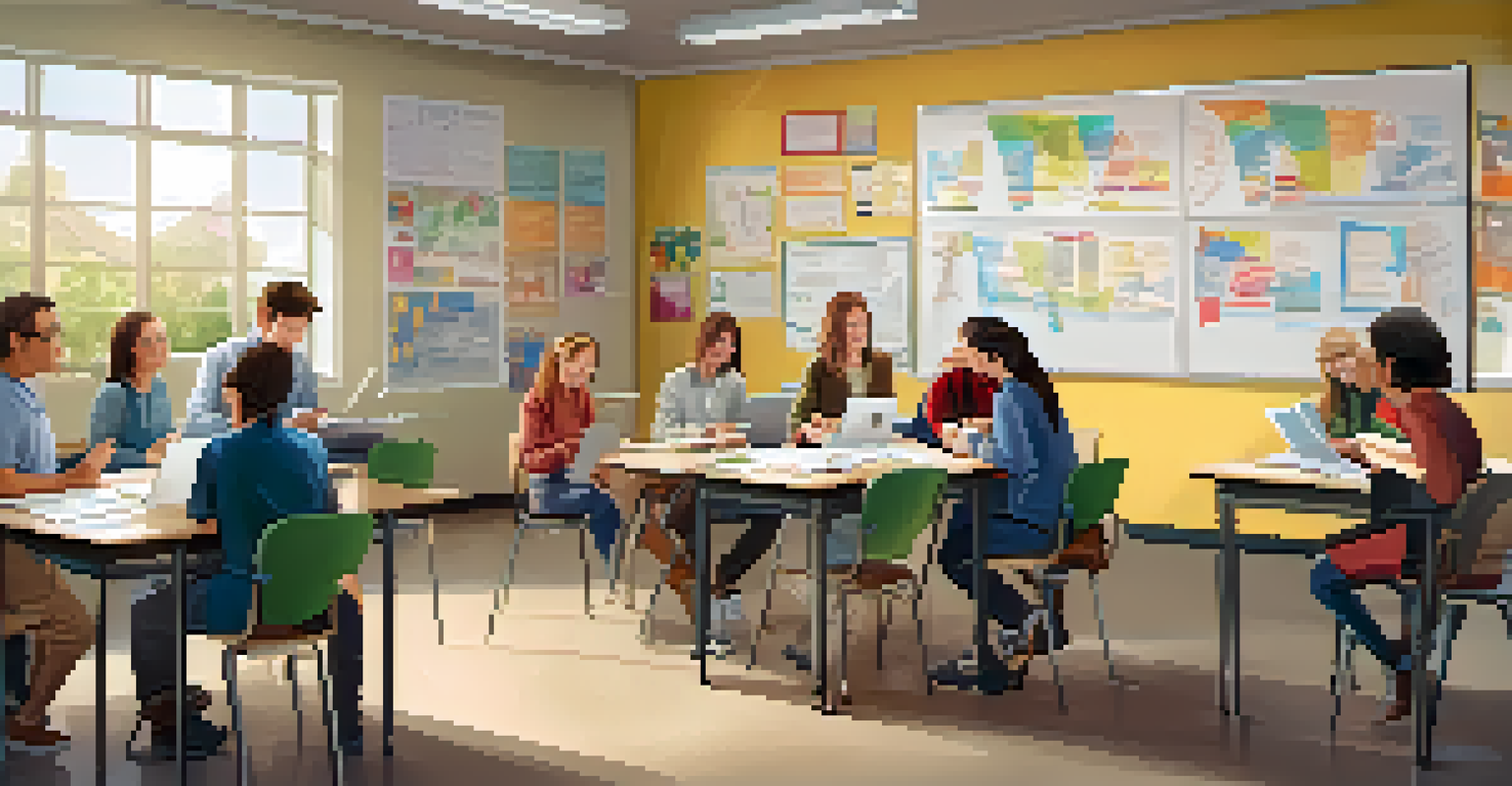Cross-Curricular Connections in Project-Based Learning

Understanding Project-Based Learning Basics
Project-Based Learning (PBL) is an educational approach that emphasizes active learning through real-world projects. Instead of traditional teaching methods, here students engage in hands-on activities that require critical thinking and collaboration. This approach encourages deeper understanding and retention of knowledge as students apply what they learn in practical contexts.
Tell me and I forget. Teach me and I remember. Involve me and I learn.
In PBL, students work on projects over an extended period, which allows them to explore various subjects and themes. This immersive experience helps them draw connections between different areas of study, making learning more meaningful and relevant. By focusing on problem-solving and inquiry, students develop skills that are essential for their future careers.
Ultimately, the goal of PBL is to prepare students for the complexities of the real world. By engaging in projects that require interdisciplinary knowledge, they learn to think critically and creatively, two skills that are highly valued in today's job market. This approach transforms the learning experience and equips students with the tools they need to succeed.
The Importance of Cross-Curricular Connections
Cross-curricular connections refer to the integration of knowledge from different subjects to enrich learning experiences. These connections help students see the bigger picture, making it easier for them to relate concepts from one discipline to another. For instance, a project on climate change can incorporate science, geography, and even art, fostering a holistic understanding of the issue.

By weaving together various subjects, educators can create a more engaging and relevant learning environment. When students can see how math applies to a science experiment or how history informs literature, they are more likely to stay motivated and involved. This approach not only enhances comprehension but also encourages students to think critically about the interconnectedness of knowledge.
Project-Based Learning Enhances Skills
Project-Based Learning fosters critical thinking and collaboration by engaging students in real-world projects.
Furthermore, cross-curricular connections prepare students for real-world challenges, which rarely exist in isolation. In everyday life, we often draw on multiple areas of knowledge to solve problems. By encouraging this kind of thinking in school, we help students develop adaptable skills that will serve them well in their future endeavors.
Examples of Cross-Curricular Projects
One popular example of a cross-curricular project is creating a community garden. This project can incorporate science (understanding plant biology), math (calculating garden dimensions), and even art (designing garden layouts). Such a project not only teaches students about horticulture but also allows them to engage with their local environment and community.
Education is not the filling of a pail, but the lighting of a fire.
Another example could be a historical reenactment, where students research a specific era, study the relevant art and literature, and then perform a play or presentation. This method not only deepens their understanding of history but also develops skills in communication, creativity, and teamwork. Such projects can be highly engaging and memorable for students.
These cross-curricular projects showcase the potential of PBL to create meaningful learning experiences. By combining different subjects, students gain a more comprehensive understanding of the topics at hand, making the learning process not just educational, but also enjoyable and impactful.
Benefits of Integrating Subjects in PBL
Integrating subjects in Project-Based Learning brings numerous benefits to students. It enhances engagement, as learners are more likely to be interested in projects that connect to their lives and interests. This increased engagement often leads to higher motivation and improved academic performance, as students take ownership of their learning.
Additionally, this integration fosters critical thinking skills. When students encounter complex problems that require knowledge from multiple disciplines, they must analyze information, synthesize ideas, and make connections. These skills are essential not only for academic success but also for navigating challenges in the real world.
Cross-Curricular Learning Boosts Engagement
Integrating subjects in education helps students relate concepts and stay motivated through meaningful projects.
Moreover, interdisciplinary learning encourages collaboration among students. Working together on projects that span various subjects helps build teamwork skills and promotes respect for diverse perspectives. This collaborative spirit is invaluable, as it mirrors the way professionals often work in teams to solve complex issues.
Challenges in Implementing Cross-Curricular PBL
While there are many benefits to cross-curricular Project-Based Learning, there are also challenges that educators may face. One common hurdle is the need for collaboration among teachers from different disciplines. This requires planning and communication, which can be time-consuming and may not always be feasible within existing school schedules.
Additionally, some educators may feel uncomfortable straying from traditional teaching methods. They might worry that integrating subjects could dilute the content or lead to confusion among students. Overcoming these concerns requires professional development and a supportive school culture that values innovation and collaboration.
Finally, assessment can be tricky in cross-curricular projects. Educators must find ways to evaluate students' knowledge and skills across multiple subjects, which can complicate grading. However, with clear criteria and rubrics, it’s possible to create a fair assessment strategy that accurately reflects students’ learning.
Strategies for Successful Cross-Curricular PBL
To successfully implement cross-curricular Project-Based Learning, educators can start by identifying common themes that link different subjects. For example, a project on renewable energy could involve science, technology, and social studies. By finding these connections, teachers can create a cohesive project that engages students across disciplines.
Collaboration among educators is also essential. Teachers should meet regularly to discuss project ideas, share resources, and align their objectives. This teamwork not only helps streamline the planning process but also fosters a culture of support and innovation among staff.
Future Trends Favor Holistic Education
The shift towards cross-curricular Project-Based Learning reflects the need for skills like creativity and teamwork in today's world.
Lastly, involving students in the planning process can greatly enhance engagement. Allowing them to voice their interests and ideas can lead to more meaningful projects that resonate with their experiences. When students feel invested in their learning, they're more likely to take initiative and contribute positively to the project.
Future Trends in Cross-Curricular Project-Based Learning
As education continues to evolve, the trend toward cross-curricular Project-Based Learning is likely to grow. With the increasing emphasis on skills like critical thinking, creativity, and collaboration, educators are recognizing the importance of integrating subjects. This shift reflects a broader understanding that knowledge is interconnected and cannot be compartmentalized.
Technology will also play a significant role in shaping the future of PBL. Digital tools can facilitate collaboration between students and teachers across different disciplines, making it easier to develop and execute cross-curricular projects. Online resources and platforms can provide access to a wealth of information, enhancing the learning experience.

Ultimately, the future of education lies in embracing a holistic approach to learning. By continuing to explore and implement cross-curricular connections in Project-Based Learning, we can prepare students for the complexities of the modern world, equipping them with the skills and knowledge they need to thrive.